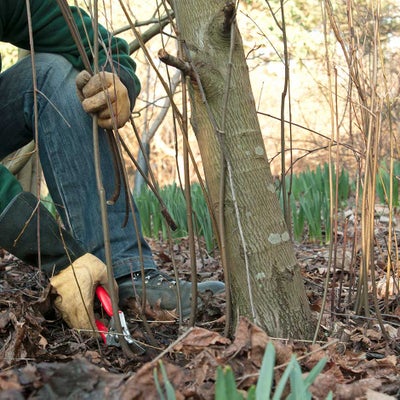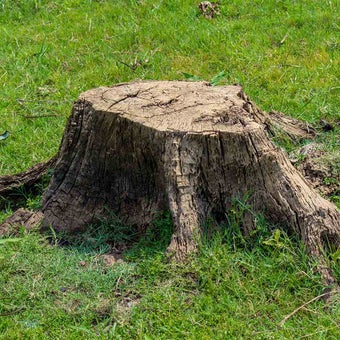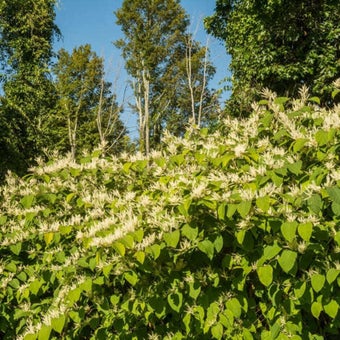
Quick facts
Suitable for - All climber, shrub and tree seedlings and suckers
Timing - Any time.
Difficulty - Moderate
What are suckers and seedlings?
Tree and shrub seedlings may also be a nuisance, as they are often numerous and can quickly spread, becoming deep-rooted.
How to distinguish between suckers and seedlings;
- Suckers are growths that appear from the root systems of many trees and shrubs. They may appear in borders, lawns, between paving stones or through paths, and can become a nuisance. Poplars, cherries, plums, stags-horn sumach, lilacs and false acacias all sucker freely. Suckers from non-grafted plants can be removed when they have roots at their base, to be grown on as an easy and low-cost way to produce more plants.
- Many trees and woody plants also set seedlings profusely, which can be a good thing, as it generates new plants, but can also become an unwanted nuisance in the lawn, borders and other parts of the garden
This page looks at options for gardeners when suckers or seedlings of woody plants are becoming a problem.
The problem
Suckers
Suckering is part of the natural habit of plants, and is one way they exploit a favourable habitat, instead of relying on seed spread, for example.
Some trees and shrubs are naturally shallow-rooting; many others may develop roots near the surface due to difficult growing conditions, such as a high water table or impervious subsoil. This makes them more prone to suckering.
Suckers can appear after root damage, resulting from digging or forking around trees, damage to surface roots during mowing, or where roots are accidentally or deliberately severed during excavations.
Seedlings
Seedlings can arise from tree and shrub seeds that drift in the air (ash or sycamore keys for example), are buried by wildlife (such as hazelnuts and oak acorns), or excreted by birds (such as holly or Mahonia seeds).
Control
Use non-chemical control methods to remove suckers and seedlings.
- Suckers: Remove suckers as close as possible to the point of origin on the root, scraping away soil to reach the base if necessary. Tear, rather than cut away, the shoot so that the majority of dormant basal buds are removed, thus reducing the possibility of regrowth. In grassed areas where roots are surfacing, strip off the turf and raise the soil by 5-7.5cm (2-3in) before replacing the turf in late autumn or early spring
- Seedlings: Dig out as much root as possible. Seedlings are much easier to remove than suckers and less prone to returning







